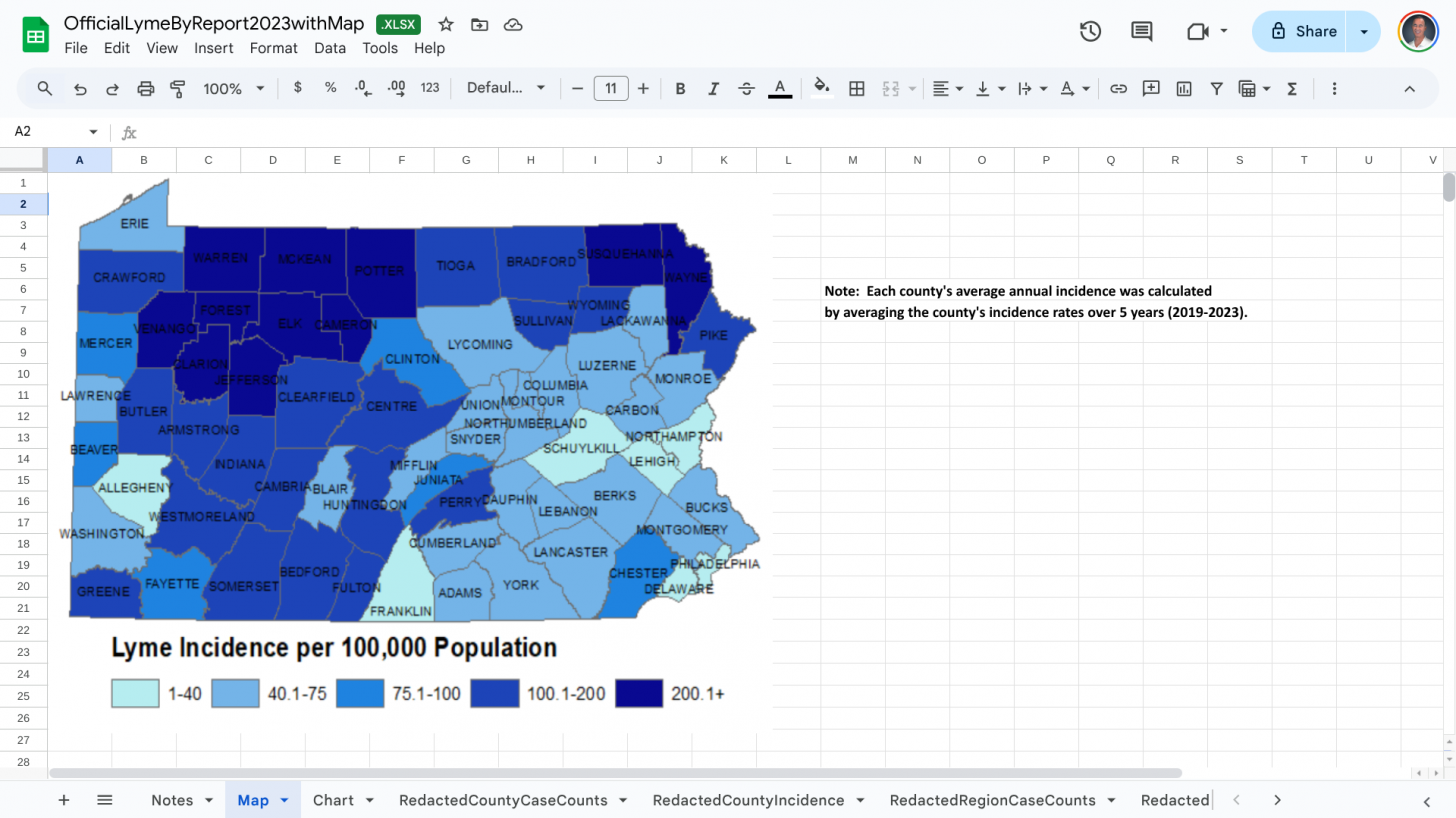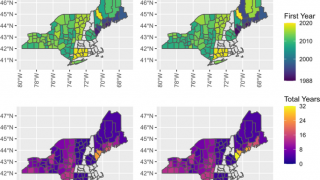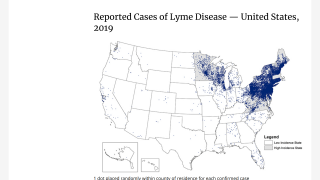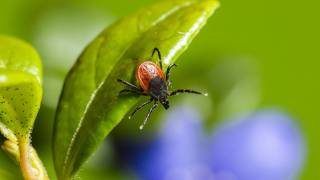Pennsylvania's Lyme Disease Season Approaching Again

Since Lyme disease became a nationally notifiable condition in 1991, the northeastern section of the United States has borne the bulk of cases. With freezing temperatures fading and snow melting away, the risk of Lyme disease is returning to the northeastern section of the United States.
While ticks can be found in various environments, such as in tall grasses, mountain ranges, and even your yard, it is essential to take preventive measures to avoid tick bites, especially in Pennsylvania.
Of the 89,000 Lyme disease cases reported in 2023, Pennsylvania reported 8,431, the second-most in the U.S.
All 67 counties in Pennsylvania reported Lyme disease cases in 2023, ranging from 8 in Sullivan County to 601 in Chester County, located just west of Philadelphia.
According to data from the Pennsylvania Department of Health Tickborne Diseases Dashboard, the Lyme disease season generally starts in April, and cases are reported for the next few months.
About 54% of cases were reported between May and August in 2022.
In a state like Pennsylvania, Lyme disease can often be diagnosed based solely on the appearance of an erythema migrans rash. If no rash is present or it doesn't look typical, a blood test can be used for diagnosis.
The blood sample is sent to a lab for a screening test, which checks for antibodies to Lyme disease. The first test is usually an ELISA, and the second is often a Western Blot, although both can also be types of ELISA tests.
These Lyme disease tests are offered at commercial labs in the U.S.
Ixodes scapularis is a primary vector for tickborne pathogens in North America. Repeated exposure to these ticks can trigger a humoral immune response to tick antigens, leading to acquired tick resistance.
However, identifying the specific antigens contributing to this resistance is challenging due to the many proteins secreted by I. scapularis during feeding.
To tackle this issue, researchers recently developed a technique called I. scapularis Rapid Extracellular Antigen Monitoring, which can detect antibody responses to over 3,000 tick antigens.
Additionally, they studied the natural immune response to tick bites by profiling the antigens recognized by IgG from a tick-resistant individual, others who had Lyme disease, and tick-bitten guinea pigs and mice.
In total, they identified 199 recognized antigens. Notably, several of these antigens contained histamine-binding domains.
From a prevention perspective, the U.S. Food and Drug Administration and the European Medicines Agency have not approved a preventive Lyme disease vaccine in 2025. The only human Lyme disease vaccine marketed in the U.S. was discontinued in 2002.
One multivalent Lyme disease vaccine candidate co-produced by Pfizer Inc. and Valneva SE targets Borrelia's outer surface protein A. The VLA15 vaccine candidate is conducting late-stage clinical trials in 2025 and is accepting new participants.
Until a Lyme disease vaccine becomes available in the U.S., states such as Pennsylvania suggest paying close attention to the little bugs hiding along your walk in the woods.
Our Trust Standards: Medical Advisory Committee
























